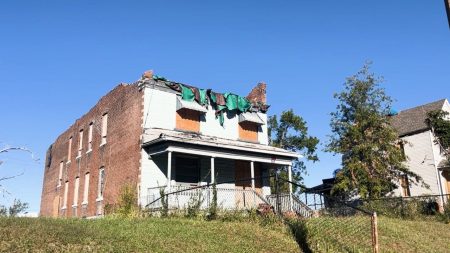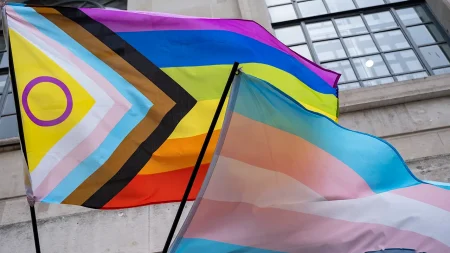Gaza Winter Crisis: Residents Face Freezing Conditions Amid Ongoing Conflict
In the heart of Gaza, where the landscape has been transformed by conflict, a new enemy has emerged—not one that arrives with weapons, but with freezing temperatures and relentless downpours. As winter tightens its grip on the devastated territory, hundreds of thousands of displaced Palestinians find themselves battling the elements in makeshift shelters that offer little protection against the season’s wrath. This humanitarian crisis, exacerbated by nature’s fury, presents yet another layer of suffering for a population already pushed to the brink.
Shelter in the Storm: The Reality of Tent Life During Gaza’s Harsh Winter
The scene across Gaza’s displacement camps tells a story of human endurance against overwhelming odds. Families huddle together under rain-soaked canvas as temperatures plummet to near-freezing at night. Ahmed Mahmoud, a 42-year-old father of three from northern Gaza, describes the conditions: “When the rain comes, everything we own becomes wet—our blankets, our clothes, even the food we’ve managed to save. The ground turns to mud, and the children wake up shivering.” In Rafah, where many fled following evacuation orders, the population has swelled from 250,000 to over a million, creating what aid workers describe as “a humanitarian catastrophe within a catastrophe.” The tents, hastily erected and constructed from whatever materials could be salvaged, offer minimal insulation against temperatures that have dropped to as low as 5°C (41°F) overnight. For the elderly and young children, these conditions pose not just discomfort but serious health risks.
Health Crisis Intensifies as Weather Worsens
The combination of cold, wet conditions and overcrowding has created a perfect storm for disease outbreak in Gaza’s displacement camps. Medical professionals working with international aid organizations report alarming increases in respiratory infections, particularly among children and the elderly. Dr. Nadia Al-Shaer, working at a field hospital in central Gaza, explains the dire situation: “We’re seeing cases of pneumonia, bronchitis, and severe flu that we simply don’t have the resources to treat properly. Children arrive soaking wet, with high fevers and struggling to breathe.” The World Health Organization has warned that without immediate intervention, the winter months could see a dramatic spike in preventable deaths. With only 13 of Gaza’s 36 hospitals partially operational, the healthcare system—already crippled by conflict and shortages—faces an impossible burden. Medical supplies remain critically low, with antibiotics and pediatric medications in particularly short supply. Aid workers report that the psychological impact of these conditions cannot be overstated, with many children showing signs of severe trauma compounded by the physical discomfort of their living situations.
Humanitarian Response Struggles Against Mounting Challenges
International aid organizations have intensified efforts to distribute winter essentials, but logistical challenges and access restrictions continue to hamper these operations. “The need far outstrips what we’ve been able to deliver,” explains Marco Serrato, a coordinator with an international humanitarian organization. “We’re trying to distribute winterization kits containing thermal blankets, warm clothing, and waterproof ground sheets, but reaching everyone in need remains nearly impossible.” The United Nations Relief and Works Agency (UNRWA) estimates that at least 1.9 million people—almost the entire population of Gaza—are in urgent need of humanitarian assistance as winter progresses. Despite pledges of support from donor countries, the actual delivery of aid remains complicated by damaged infrastructure and security concerns. Humanitarian corridors, which could allow for more efficient aid distribution, have been inconsistent, leaving many communities isolated and vulnerable. Those working on the ground describe a sense of desperation as they witness families burning plastic and other hazardous materials in attempts to generate heat, creating additional health risks in the process.
The Struggle for Basic Necessities Intensifies
As the temperature drops, the competition for basic survival necessities has intensified. Clean water, already scarce before winter’s arrival, has become even more precious as rain contaminates many sources with sewage and debris. Families report collecting rainwater in any containers they can find, often with no means to purify it before consumption. “We have to choose between drinking potentially contaminated water or no water at all,” says Fatima Al-Najjar, a mother of five sheltering in a school-turned-displacement center in Khan Younis. “The children are always thirsty, always hungry.” Food security has reached critical levels, with the World Food Programme warning that famine conditions are developing in parts of the territory. Cooking has become another challenge—wet fuel doesn’t burn, and many families lack any form of shelter that would allow them to prepare hot meals. The cold has added caloric requirements to bodies already weakened by months of inadequate nutrition. Winter clothing, particularly for growing children, is in desperately short supply. Many wear the same garments they fled in months ago, now threadbare and offering little protection against the elements.
Looking Forward: Sustainable Solutions Amid Continuing Crisis
As international attention fluctuates and emergency responses prove insufficient, humanitarian experts are calling for more sustainable approaches to addressing Gaza’s winter crisis. “Emergency blankets and temporary shelters were never meant to house people for months through a Mediterranean winter,” explains Dr. Sarah Jameel, a disaster response specialist who has worked in multiple conflict zones. “What’s urgently needed is a coordinated approach to creating more weather-resistant temporary housing, improved drainage systems in displacement camps, and reliable supply chains for winter essentials.” Proposals include the deployment of insulated emergency shelters, solar-powered heating systems that don’t rely on scarce fuel, and water purification solutions that can function in emergency settings. However, implementation remains challenging without improved access and a reduction in hostilities.
The Human Cost of Winter in a War Zone
Beyond statistics and logistics lies the profound human impact of enduring winter in a conflict zone. For children who have known nothing but war for months, the cold brings new fears and discomforts. Child psychologists working in Gaza report increasing signs of regression, nightmares, and anxiety directly linked to the physical conditions in which families are forced to live. “Children tell me they’re afraid to fall asleep because they worry they won’t wake up from the cold,” says Maryam Abushaban, a local psychologist working with displaced families. “They’ve developed a new vocabulary around their suffering—words for different kinds of cold, different types of rain that comes through their tents.” For adults, the inability to provide basic warmth and shelter for their families compounds the trauma of displacement and loss. Many describe the psychological toll of watching their children shiver through the night while being powerless to improve their situation.
The winter crisis in Gaza represents not just a seasonal challenge but a test of international humanitarian resolve. As one aid worker poignantly observed, “Natural conditions don’t recognize conflict lines or political positions—cold affects everyone equally.” For those living through Gaza’s winter under canvas and tarpaulin, each passing day brings both the hope of eventual respite and the immediate reality of another night battling the elements in one of the world’s most challenging humanitarian environments. While political solutions remain elusive, the immediate needs of warmth, shelter, and dignity grow more urgent with each passing cold front, demanding a response that acknowledges both the scale of the crisis and the humanity of those enduring it.









